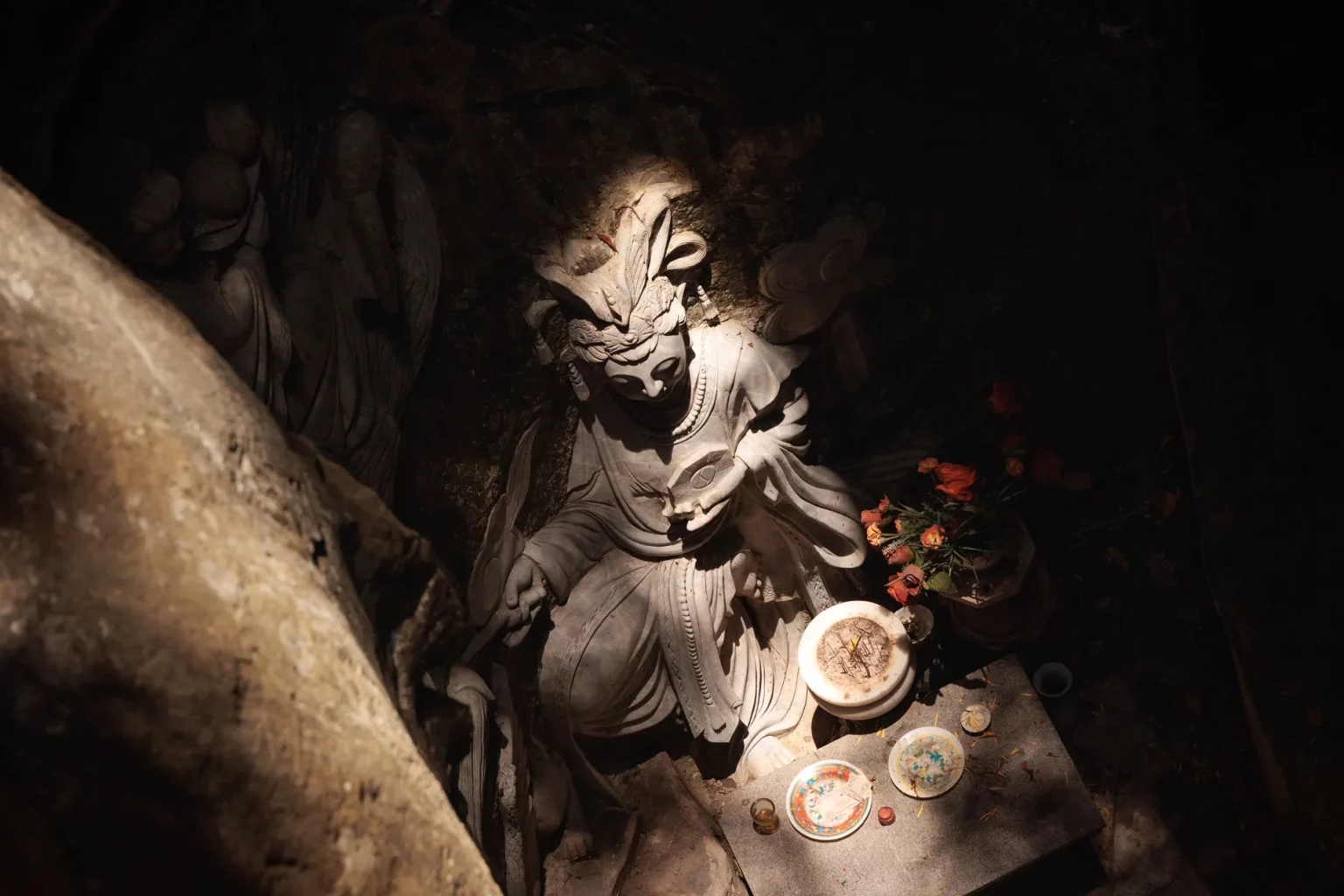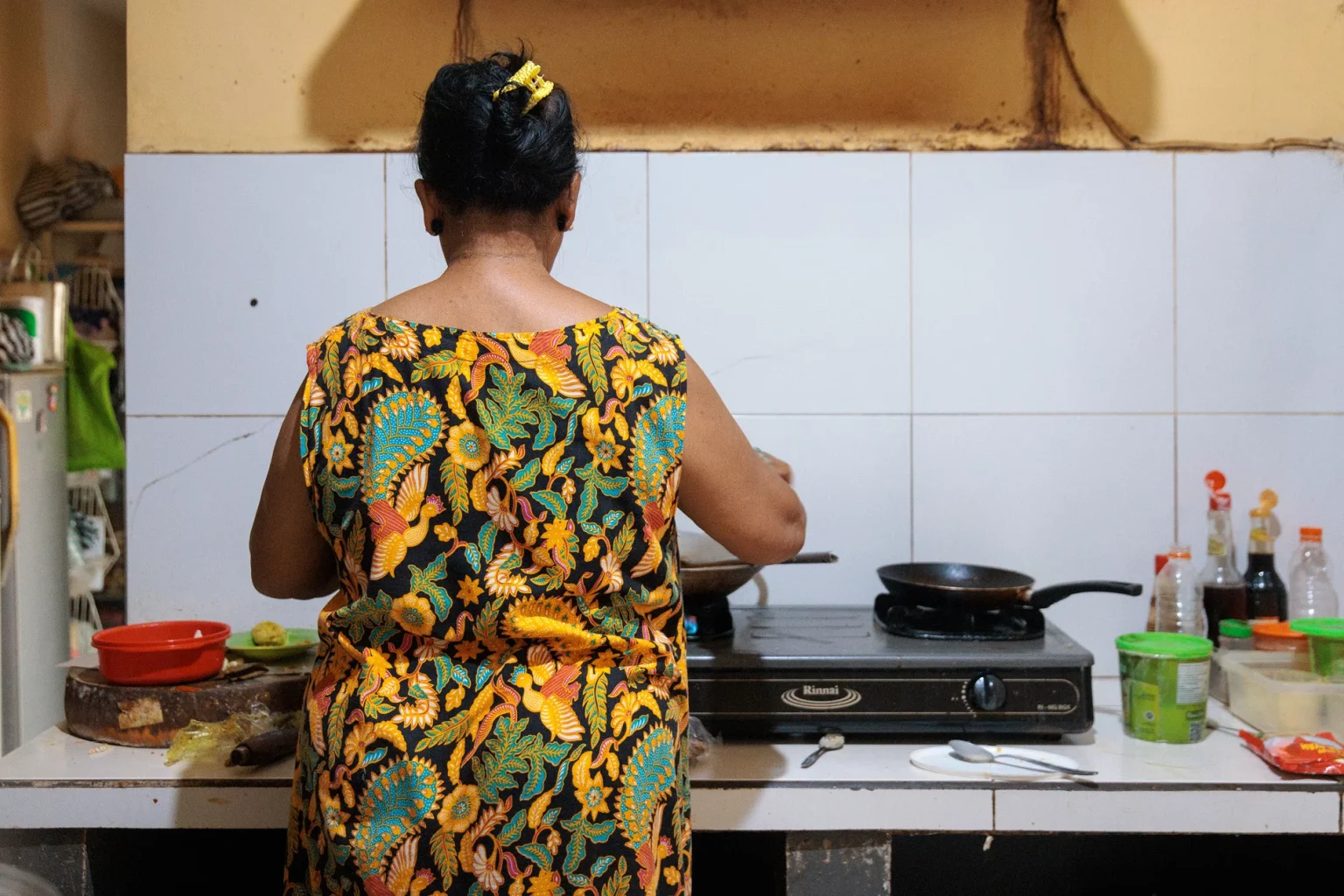Imagine spending every day where your parents, uncles and grandparents before you spent their days. Imagine watching life go by, your hair grow, your clothes wear out, while reading stories from the past in the wrinkles of those who brought you into the world.
Opposite the Grand Palace in Bangkok, on the corner of Silpakorn University, there is a family restaurant, a historic place. It is run by a Thai family of Chinese descent, whose members have, for each other, nicknames like Moo and Fon, in Chinese “Pig” and “Rain”. They have been carrying on the tradition of this place called Thong Heng Lee for three generations, albeit under different guises and swapping roles across time.
On that day, we had just visited the immense Grand Palace in all its splendour, and we were quite hungry. We walked up and down the curb opposite the palace, looking at the restaurants on the street while our stomachs grumbled.
We walked past Thong Heng Lee but decided to go ahead and have a look further.
Only on the way back, an elderly but lively gentleman stood outside the restaurant and invited us in, gesturing towards a big airy room with no doors. We agreed to stop there, so the gentleman showed us to our seats and handed us two menus.
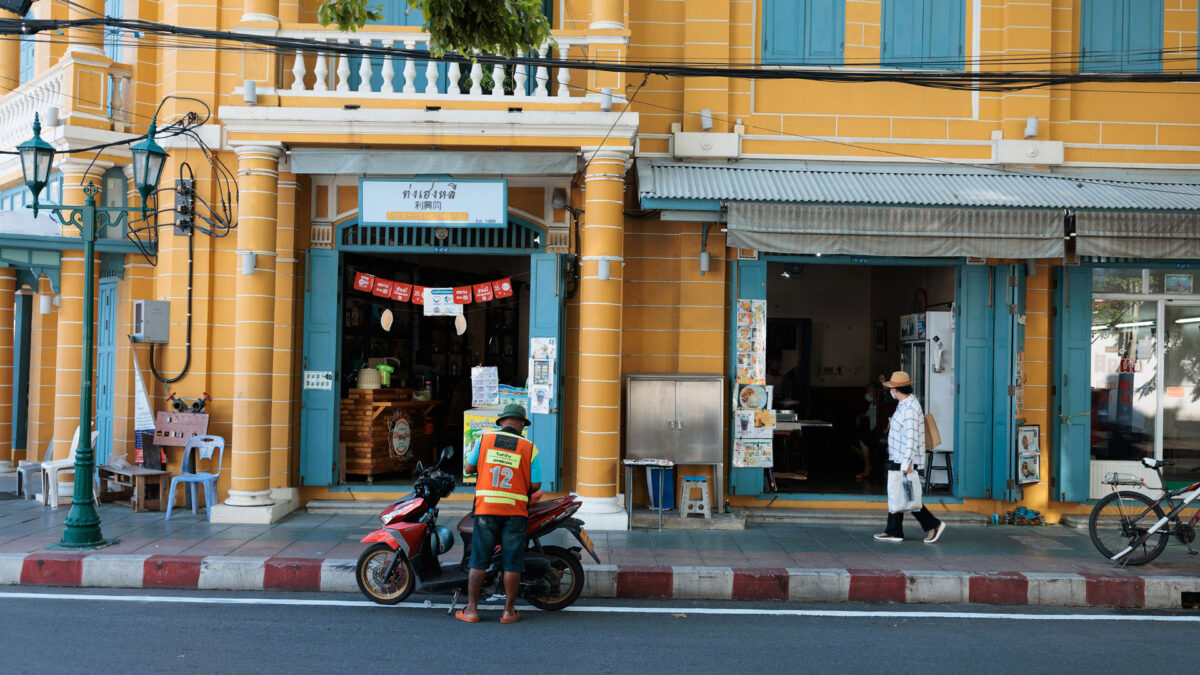
On the walls were some old photos: same place, other wall paint and other people.
The slight, kind man spoke a little English, enough to communicate effectively. His name was Prateep, he was rather small, looked affable, and he did not seem to have to think about his movements. His body knew these tables, these rooms and places of intimate acquaintance, which only the calluses of habit are able to teach. All that time spent in here must have made the place look like him and vice versa, in a smooth, uncomplicated transmigration of features from one to the other.
As we enjoyed our lunch accompanied by an overly sweet drink, we started chatting with a woman in her thirties, that turned out to be his daughter, Sriprapha (but everyone calls her Moo). Once we asked a few questions about this place, her family history begun to unfold in faint pencil strokes from her words. In the background a woman was skilfully frying an egg in a giant wok; she said hello, introducing herself as Sripapai (her nickname is Fon), the younger daughter. An older woman sat in a corner, smiling and nodding while Moo talked. That one, we’d learn soon, was Samsri, Prateep’s wife. There was an atmosphere of cosy familiarity between them; Jyl and I smiled at each other, and we knew it even before speaking: these people were Tribers!
A tale of old: how it all begun
In the 1940s, Prateep’s father came to Thailand from China. He was escaping from the war and was looking for a new beginning. He found work as a janitor in the Grand Palace and rented a place to sleep just in front. A simple sequence of actions, I would imagine: work, eat, sleep, repeat, but with one goal: to build a new life. When he felt like this life was starting to take shape and could secure a home for his family, he returned to China to bring his wife and kids over.
Once she settled in Bangkok, his wife decided to do something with the big place her husband had rented. She opened a little eatery where she was selling only coffee and soft-boiled eggs, a known Chinese speciality. Over the years they had 6 children and two of them, Wat and Malee, respectively the uncle and the aunt of Moo and Fon, took over the place once they came of age.
In the meantime Prateep got married and went to work as an accountant from Monday to Friday, while helping out at the restaurant on week-ends. His wife was also working there.
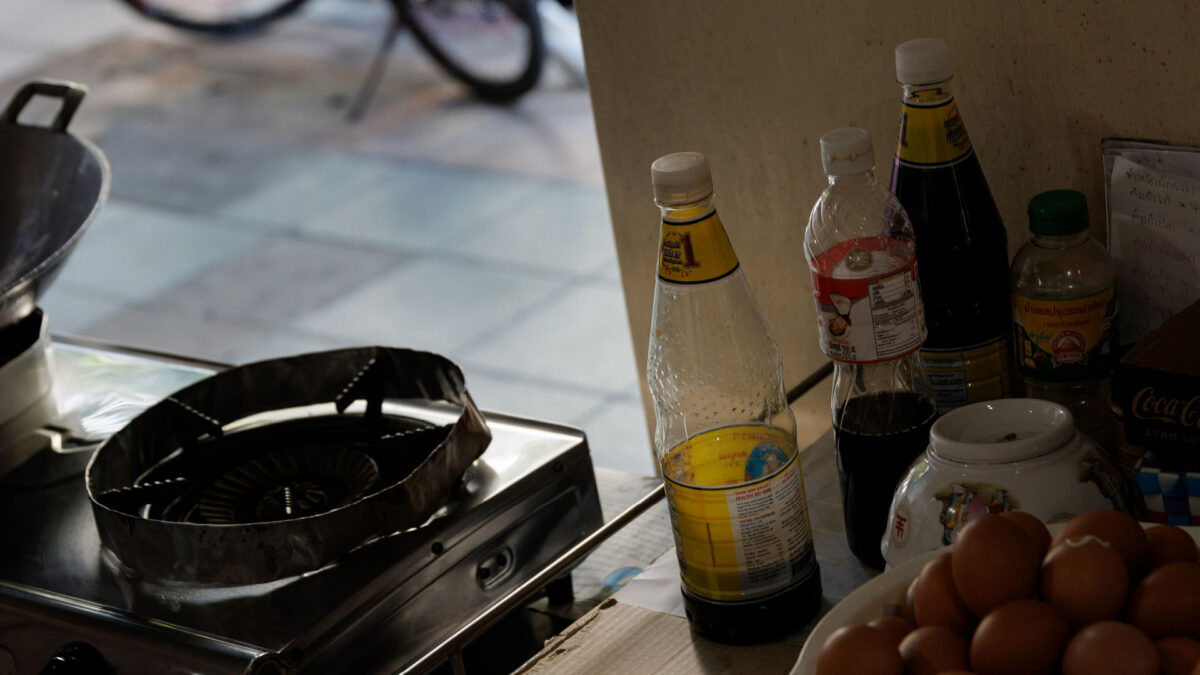
Uncle Wat, Prateep’s brother, expanded the menu, introducing a barbecued pork fried rice for which their restaurant became quite famous. Many people still come here to find both Chinese and Thai cuisine, but I’m sure many must come to honour its history and tradition as well.
The inlaid story
There is a huge framed photo of uncle Wat hanging from one of the walls. In it, he is sitting on the very same bench where we are now. He is smoking a cigarette, shirtless, his bony limbs stick out remarkably, and so does the tormented expression painted on his face. The picture was taken by a friend, a university professor who started a project about photographing people from the neighbourhood.
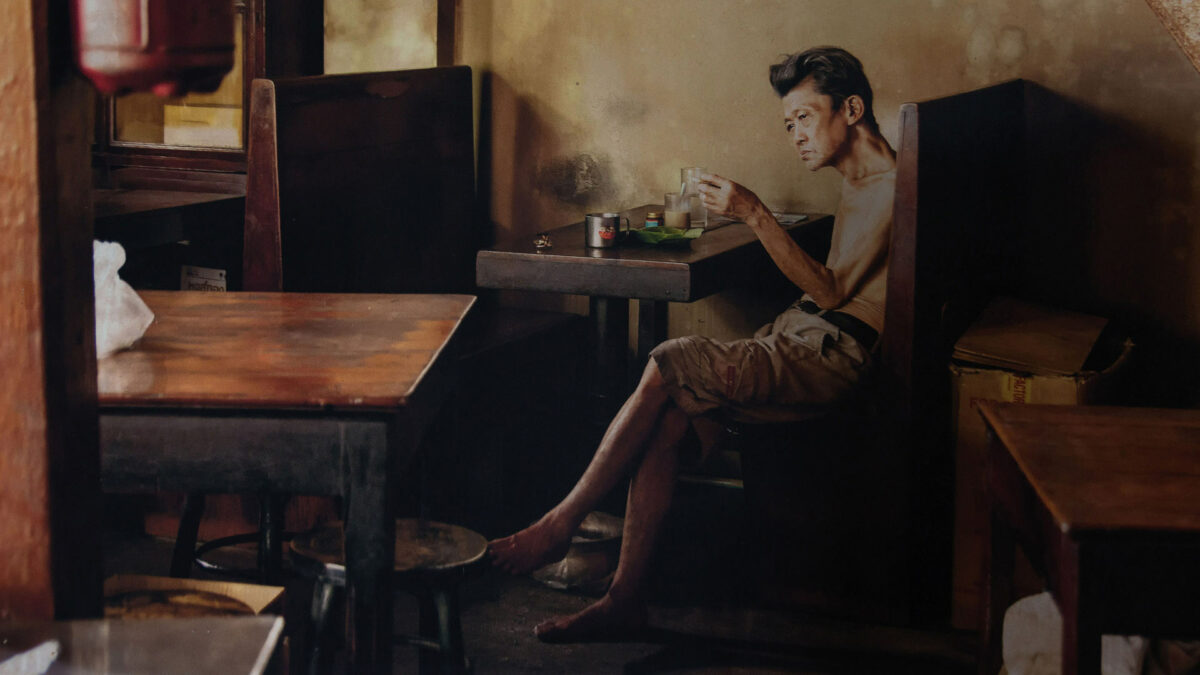
We have never met Wat and if we hadn’t asked who that person was we wouldn’t have met his family either. But we did and so here we are, stitching their story on paper. Even this building is part of the chronicles, and not in a marginal way: it has earned its place among the members of this family, and like all of them has its quirks and oddities. I suspect that, as such, it is loved by the family as it is, for and in spite of everything.
A new day
Uncle Wat died at age 79, in 2015. That’s when Prateep took over completely.
In a way, it’s thanks to him if we got to meet them all. Without him this place might not have existed in our timeline. And so we sit here today, among these people who are related to each other but to whom we are not related. And it is something to think about, how strange it is to be here, to stumble upon someone’s life and think “How cool, your life seems so different from mine, tell me about it”.
So, after his brother died, they closed the place for a while to renovate and went to live somewhere else until the reconstruction was over. The whole family care about this place beyond its walls and commercial value.
“This is our house, our home”
Moo
Moo gestured towards the huge solid wood case that stretched across one wall, stating that it is 100 years old. Apparently, her father had it restored and that it was carved from a single block of wood. It’s a storage type of cabinet, and glued to its windows are old pepsi and coke stickers, as well as other logos that I do not recognise. Inside, plastic cutlery, some light bulbs, old New Year’s decorations, a couple of steel milk frothers and who knows what else. Charming old train chairs are used as seats, and I can’t help but wonder: how many people must have eaten at these tables?
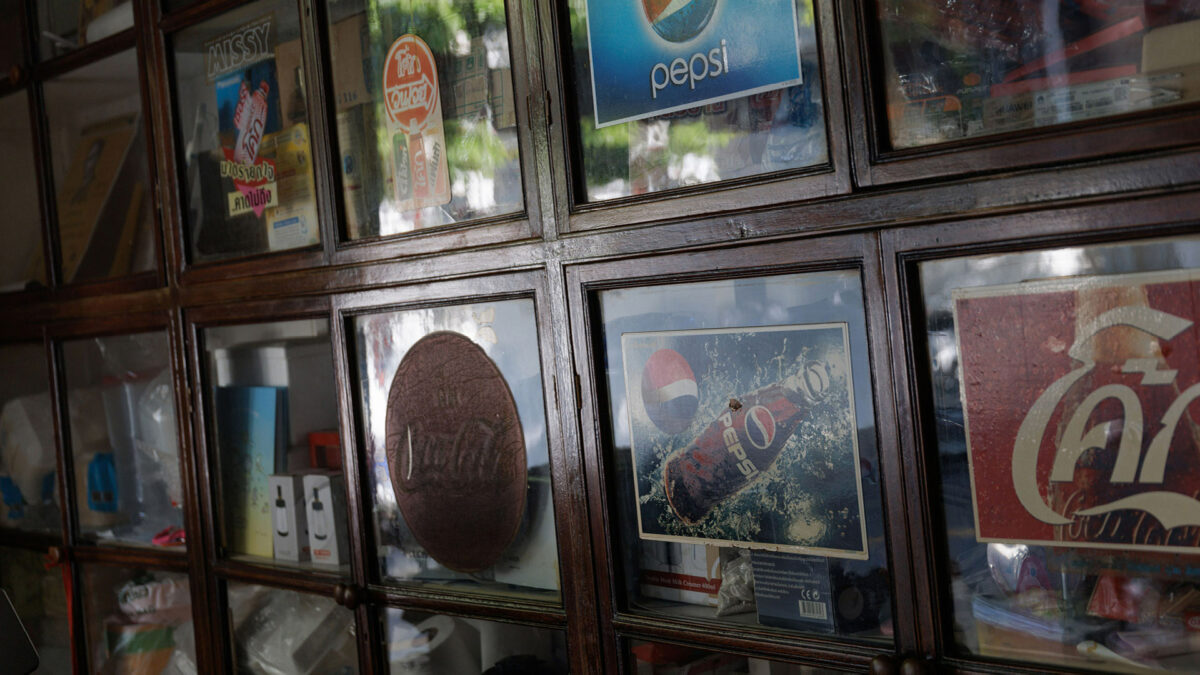
On the wall there are a few drawings, painted flowers and a quote in cursive script “Life is a wonderful journey, make it your journey, not someone else’s”
She keeps repeating that this place has been standing since 1909, although the maths doesn’t add up once you cross-reference it with the timeline she gave us.
I try to ask but my question gets lost in translation. But after all, I don’t mind that this place holds secrets. Perhaps somewhere within these walls there is a story about a time hole in the backroom.
The pot of passing time
After Prateep took the reins and started working full time a new era had unknowingly begun for this place. It seems like he had put his all in it, with the care that one reserves to a place with a soul, possibly the soul of someone known and loved.
These days though Prateep and his wife Samsri come only on week-ends. Unless they are bored, in which case they come to help out whenever they want.
Prateep is very active and likes to talk to people; in fact, he is quite popular among long time customers. If you ever come here, you will see him walking about, bringing things here and there, and greeting people. It’s like he is constantly waiting for the next thing to do, he loves to move and you can tell how many years he’s been doing this by how agile his body is despite his age.
Moo confesses that her parents are both afraid of doing nothing, and they love to keep busy as it makes them feel connected to life. Prateep often says that if you cannot work it means that you are dead, as if work was the defining thing that can measure all lives.
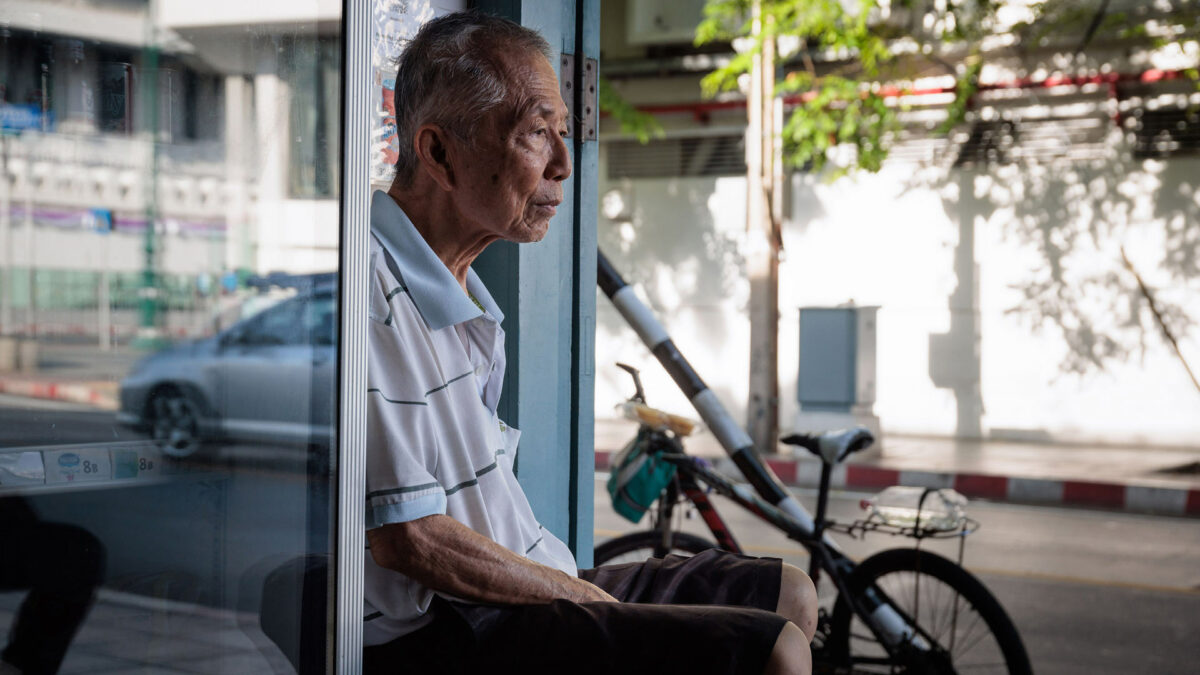
That might explain why when all customers are gone, in between one lunch round and the other, he sits on a stool looking outwards, quiet and pensive. Is he staring into the past or peaking into the future?
Xiangqin 相亲: Tinder’s great-great-grandmother
“It wasn’t love at first sight. But I know this story, cause they told it to me many times. They met through a… A matchmaker! A matchmaker!”. With much emphasis and a big smile, this is what Moo replies when I ask her how her parents met, being both Chinese in Thailand.
The matchmaker showed a picture of Samsri (but rumour has it that the one in the photo was actually her twin sister!) to Prateep, because she thought they would be a good fit. He was older, and told him she was a nice girl, not lazy at all. They married when he was 32 and she was 25.
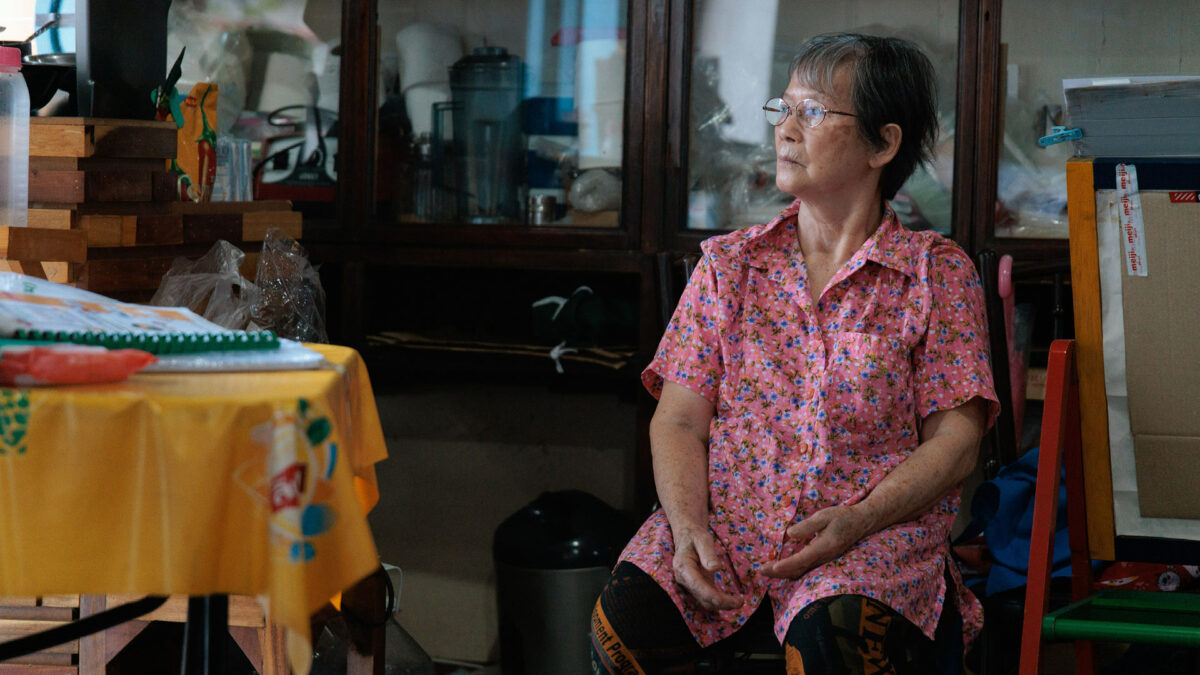
Xiangqin, the art of matchmaking, was and still is a fairly common practice in several parts of the world, but the Chinese one has withstood the passing of time and the rise of progress. And it is rather crazy to think how little time has passed since this was more or less the norm in many of the western countries too, albeit under different criteria.
Ouroboros
However much energy they had (and still have), Prateep and Samsri had already worked much of their life when they took over the restaurant, and soon it came the time for the next generation to take the place into their hands.
“Life is a wonderful journey, make it your journey, not someone else’s.”
This is how Moo and Fon entered the scene; I bet it must not have been easy initially to have to shuffle the cards, as they both already had a life and a job elsewhere. Moo was the first to step into the kitchen, she has a scientific education and worked in a shrimp factory. Later, it was the time for Fon to join her sister; she previously worked in an office and has a background in IT.
And now, here they are, running this place, chatting up clients while wearing Elf ears headband in July. There are two brothers as well, the younger is a doctor while the older works in the same shrimp factory where Moo used to work. They did not join the team though, they kept their jobs. For now. Both sisters live here, this is truly their home. They have an employee, a young woman, for whom they decided to stay open even during the pandemic, making sure she wouldn’t be out of work.
Moo and Fon seem content after all. There is a good energy in here, it’s young and fresh, but also wise and old, and I believe this is only possible where several generations coexist in giving a place or a project their energy, whatever that might be.
Perhaps this is what we sensed on entering. What we felt was the warmth emanating from the people who believed in this place for three generations, a place that has meant so much for the family and the community.
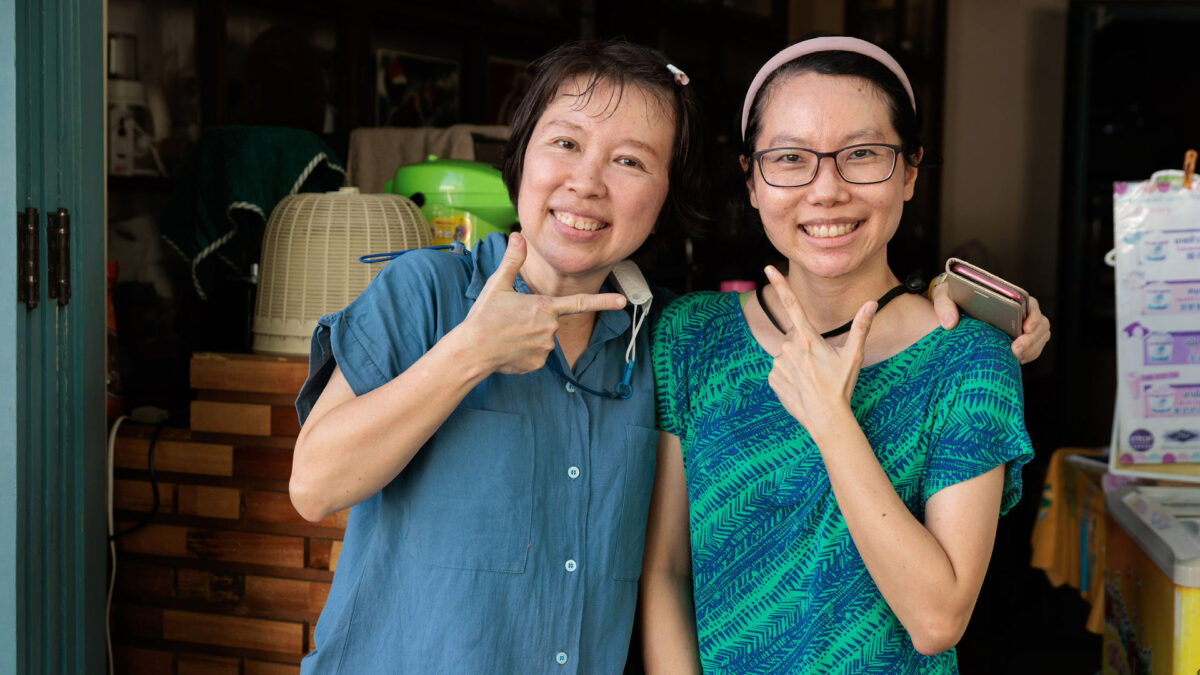
It’s beautiful, this new, young flow, this playfulness in the midst of all these shelves of history that this place holds together. And that is how it goes, this is how it begins again.
I think of all the interesting stories we pass next to every day, oblivious to their existence. It feels right to pause for a second and reflect on the millions of pieces that need to fit together for things to happen naturally, and for us to notice it’s yet another piece of this tapestry. Isn’t it full of awe, this short time we have on earth?
So, maybe next time you go somewhere, choose a place that feels real, instead of a chain cafe or restaurant, even if it looks a bit shabby or broken. Those are places with a story, and the people in there are at the same time the guardians and the storytellers of this tale, tasked with the job, often unknowingly, of protecting and carrying forward the legacy of their micro-universe. And, guess what? You, us, we can all help them to let their story come to life.

